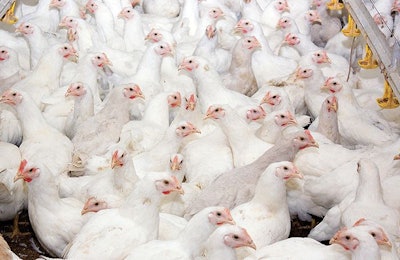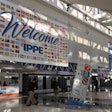
When companies like restaurant chains, foodservice operators and food processors make animal welfare commitments, meeting those pledges can be challenging. That is particularly true when the company has a presence in, or does business in, multiple countries.
NSF International, a global provider of public health and safety-based risk management solutions, provides expertise for all sectors in the food and agriculture supply chains. It realized it could help companies that may otherwise struggle to meet their welfare purchase pledges and created its Global Animal Wellness Standards. The standards – covering meat poultry, egg, beef, pork and small ruminant sectors – were introduced during a February 13 press conference at the 2019 International Production & Processing Expo (IPPE) in Atlanta.
About the poultry-related standards
Standards were established for both the poultry industry and the egg industry, along numerous steps on the supply chain. The NSF website spells out the standards for poultry slaughter, poultry transport, meat poultry production, hatcheries, live poultry assembly and laying poultry production.
The meat poultry standards can apply to multiple species, Dr. Elaine Vanier, NSF International’s animal welfare and animal feed program lead, said.
“When we were building our structures of the standards, we didn’t want to have one for broilers, one for turkeys, one for geese, one for ducks. … The way we structured it, the scope was the animals and the supply chain that’s under the responsibility of the facility or the farm. We asked them to define it. If it happens to be a poultry species from which meat is sourced, then that would be the applicable standard,” she said.
Vanier said NSF tried to avoid being prescriptive in its standards. It does not call for certain poultry breeds, such as ones approved by the Global Animal Partnership (GAP) or the Royal Society for the Prevention of Cruelty to Animals (RSPCA).
Its standards for stocking density also do not use set numbers. Instead, Vanier said, they ask the producer to define the density, and they are asked by the NSF auditor why they chose that density.
“We are asking facilities or farms to put it in writing: this is what I’m doing and why I am doing that,” Vanier said. “It’s really about that outcome and how to manage that outcome. They will have to define it in a number, but it is not written into the standards.”

Elaine Vanier, DVM (NSF International)
Developing animal wellness standards
When NSF International was developing standards, the so-called five freedoms of animal welfare were taken into account, as well as the International Organization for Standardization (ISO) and World Organisation for Animal Health (OIE) guidelines.
Key areas of focus in the drafted standards included:
- Animal sources, health and safety
- Design, maintenance and protection in animal environment, facilities and equipment
- Animal handling, husbandry and management commitment to animal wellness culture
- Feed and water
Once the standards were drafted, the were reviewed by an independent panel with representation from the agriculture industry, academia and regulatory agencies.
To achieve compliance, a client must establish, document and implement an animal welfare management system. The standards have three tiers: baseline, assurance and certification.
The baseline level provides an entry point for farms or facilities in developing markets where practices have not yet been formalized. The assurance tier provides specifiers with confidence that suppliers are operating with best practices in animal wellness. The highest tier, certification, demonstrates total commitment and compliance. All levels require independent audits to verify compliance and include zero tolerance for animal abuse, mistreatment or neglect.
Filling a niche
Robert Prevandar, NSF International’s global managing director of supply chain food safety, said the organization works with global clients that are some of the world’s largest food companies, restaurants and retailers. But, he said, each country has different regulations and supply chain challenges.
“We started seeing the opportunity for a niche that wasn’t being filled in the marketplace: Something really global that could be used in multiple levels in multiple countries,” Prevandar said.
“What we are hoping is we are giving a tool to our global customers for a consistent approach, no matter where their business takes them,” Vanier said.

Robert Prevandar (NSF International)
Strong reception
Even before the launch of the animal welfare standards, Vanier said they were well-received by NSF clients as they offered input into their development. In a separate interview two weeks after IPPE, Vanier said the interest in the standards has grown since the launch.
“We’re actually doing a lot of follow-up meetings with those global customers … inside and outside of North America,” Vanier said.
















